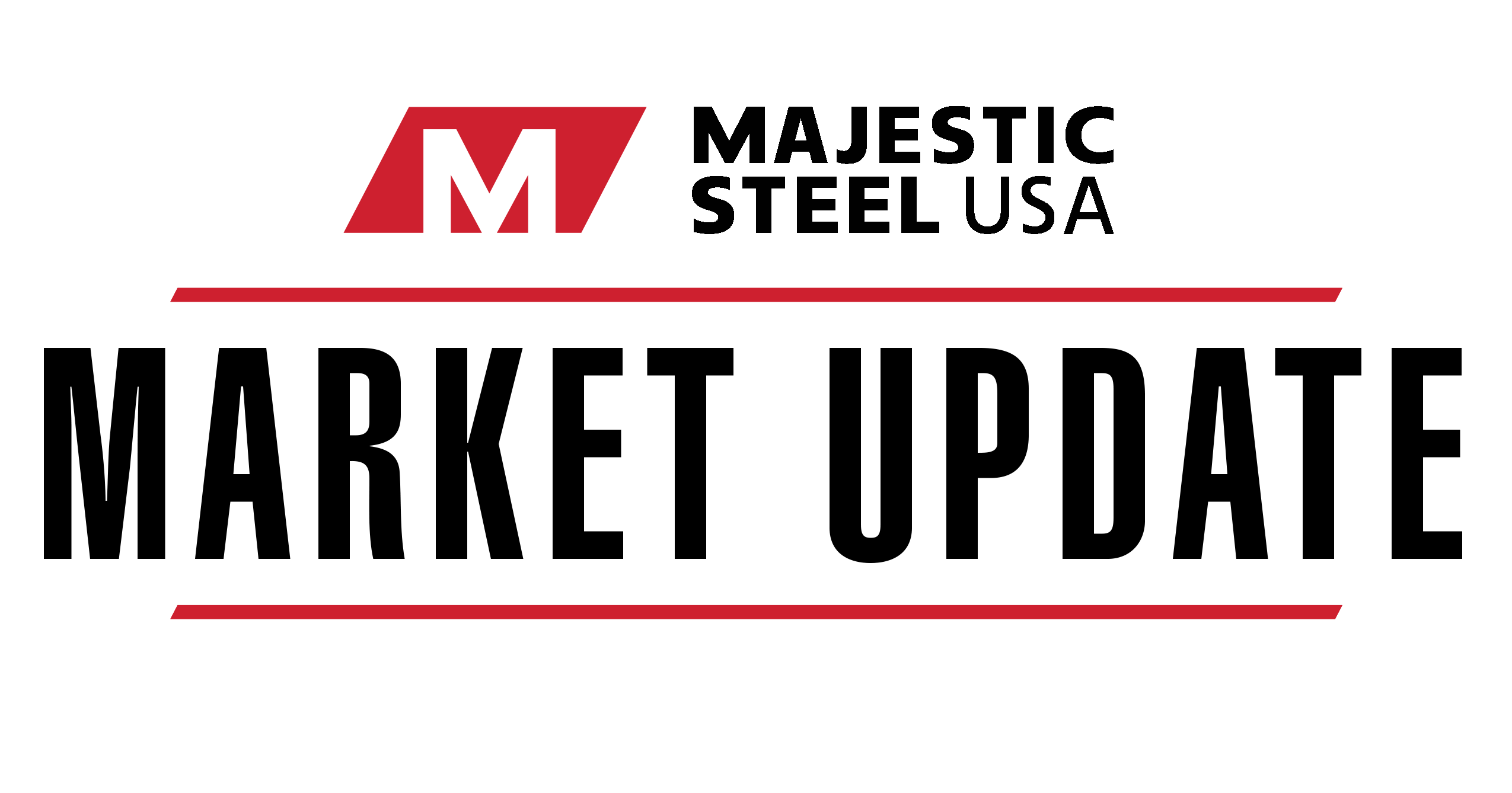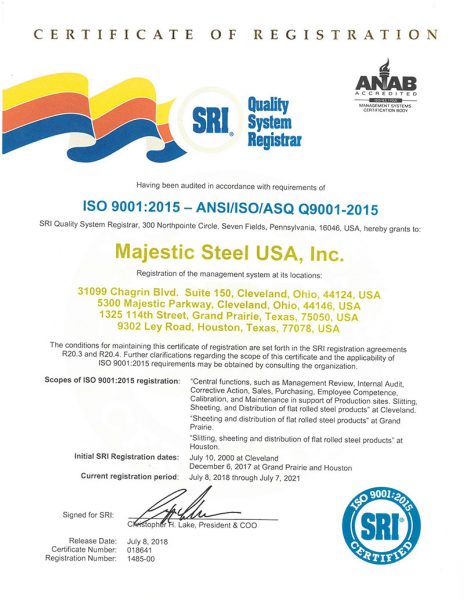Market Update | September 18, 2024
BUSINESS ACTIVITY IN THE NEW YORK REGION MANUFACTURING SECTOR INCREASED FOR THE FIRST TIME IN NEARLY A YEAR
The September Empire Manufacturing Index increased sharply to 11.5, up 16.2 from August. This was the strongest monthly growth since December 2021. The two-month average increased to 3.4, ending a string of nine consecutive negative readings. Both the new orders and shipment components increased in September, climbing to 17.3 and 17.6, respectively. The unfilled orders component increased as well, climbing 9.5 points to 2.1. The index for future business activity increased to 30.6, up eight points from August.
PRICE
Domestic flat rolled product pricing moved higher this week but remains in a tight range.
- The trade cases, stronger scrap pricing, leaner service center inventory, and upcoming mill outages are still providing upward momentum to pricing.
Input Costs
Zinc pricing rebounded sharply this week after sliding in the previous two weeks.
- Zinc pricing climbed to $1.33/lb this week, right at the 10 day and 30 day averages.
Spot iron ore pricing rebounded this week, climbing to $95/mt from $91/mt previously.
- Iron ore pricing is now at its lowest since November 2022.
Coking coal pricing held flat this week, holding to $180/mt.
- While being flat last week, pricing is now down 12.0% from this time last month.
- Prices continued to be weighed down by tepid buying interest as demand from India reportedly is still sluggish due to adverse weather conditions.
SUPPLY
U.S. raw steel production declined last week, after rebounding during the previous week.
- U.S. steelmakers produced 1.749 million tons at a 78.8% utilization rate.
- Production was down 1.3% from the prior week but up 3.4% from the same week last year.
- YTD production is down 1.7% from the same timeframe last year.
DEMAND
Business activity in the manufacturing sector, in the New York region, increased for the first time in nearly a year in September.
- The September Empire Manufacturing Index increased sharply to 11.5, up 16.2 from August.
- This was the strongest monthly growth since December 2021.
- The two-month average increased to 3.4, ending a string of nine consecutive negative readings.
- Both the new orders and shipment components increased in September, climbing to 17.3 and 17.6, respectively.
- The unfilled orders component increased as well, climbing 9.5 points to 2.1.
- The index for future business activity increased to 30.6, up eight points from August.
- While firms grew more optimistic that conditions would improve in the future, the capital spending index slide below 0.0 for the first time since 2020.
Industrial production rebounded in August after declining in July.
- The August industrial production index came in at 103.1, up 0.8% from a downwardly revised 102.3 reading in July.
- The output of manufacturing increased 0.9% after sliding in the previous two months.
- The boost in August mostly came from motor vehicle and parts manufacturing.
- The index for manufacturing excluding motor vehicles and parts increased 0.3% in August.
- Excluding motor vehicle manufacturing, the boost came from primary metals, electrical equipment, and appliances.
- The capacity utilization rate increased to 78.0%, up 1.2% from last August but still below the long-run average.
Builder confidence improved from August but remained overall pessimistic.
- The August Housing Market Index came in at 41, up slightly from 39 in August but still below the key 50.0 level.
- The slight increase in August ended a string of four consecutive monthly declines.
- Within the overall index, all three components increased, with the sales expectations for the next six months being the strongest.
- While the current conditions and prospective buyer traffic components remained below 50 at 45 and 27, respectively, the next six-month outlook increased to 53.
- This is the first month the short-term outlook has been optimistic (>50) since May.
ECONOMIC
After peaking in November 2022, inferred freight rates have seen a steady decline that continued in August.
- August inferred freight rates declined 3.0% from July and are down 7.2% from August last year.
- The 2.81 Inferred Freight Rate reading was the lowest since May 2021.
- Inferred freight rates are a simple calculation of total shipments divided by total cost (expenditures), which helps explain the movement in cost per shipment.
- While the shipment index increased slightly from July, the expenditures component declined 2.0% to its lowest level since January.
Retail sales increased slightly in August after a solid increase in July.
- August retail sales came in at a $710.8 trillion rate, up 0.1% from July and up 2.1% from the $695.9 trillion rate in August 2023.
- Retail sales have now increased in three of the last four months.
- The largest increases in sales in August came from online retailers, health & beauty stores, and sporting goods stores.
- These increases just barely offset the declines seen in sales from gas stations, department stores, grocery stores, and electronic & appliance stores.
- Year-to-date actual sales are now up 2.8% compared to the same timeframe last year.
- Excluding sales from gas stations, sales are up 3.2% compared to the same time last year.
This material, information and analyses (the “Content”) may include certain statements, estimates and projections prepared with respect to, among other things, historical data and anticipated performance. Content may reflect various assumptions by Majestic Steel USA, Inc. concerning anticipated results that are inherently subject to significant economic, competitive and other uncertainties and contingencies and have been included for illustrative purposes. Content is provided AS-IS.

